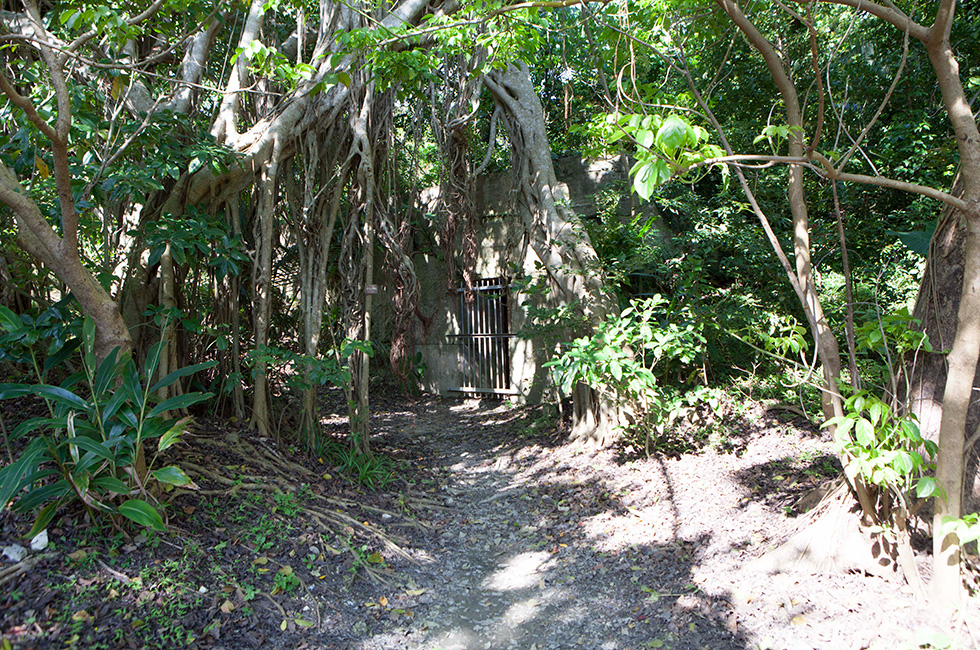32nd Army Underground Headquarters
Home > Visitor’s Guide > Ryukyu Kingdom exploration ~American writer's gaze~ > 32nd Army Underground Headquarters
32nd Army Underground Headquarters

The 32nd Army Underground Headquarters (32nd Gun Shirei Bugo) is a series of tunnels underneath Shuri Castle that were constructed during World War II by the Japanese Imperial Army in preparation for the invasion of Okinawa by US Forces. Construction started in December of 1944 and continued until shortly before the Battle of Okinawa began in March 1945. The headquarters was used for about a month until the Japanese military retreated to the southern part of the island in late May. This headquarters complex is important in understanding the fate of Shuri Castle during the Battle of Okinawa, and the immense sacrifice and loss of life suffered by the Okinawan people.
Why It Was Located at Shuri
Shuri Castle was made a Japanese military garrison in 1879, when the Kingdom of Ryukyu was abolished and Okinawa became a Japanese prefecture. Decades later, as the war in the Pacific brought Allied forces closer to Japan, the Japanese military anticipated the need for deeply entrenched defenses against the expected invasion. Underground defensive complexes were built on many of the Japanese-occupied Pacific islands, as well as on Okinawa and the Japanese mainland. The extensive underground headquarters complex here was constructed to capitalize on several advantageous characteristics. The hill on which the castle stands is formed of solid Ryukyu limestone, and was deemed capable of withstanding even heavy naval and aerial bombardment, while the high elevation of the castle site provided good views of the surrounding terrain. No consideration appears to have been given to the risk this military base would pose to Shuri Castle and the other priceless historical sites when the base would inevitably be targeted during the invasion. The intensive bombardment by US Navy ships in April and May focused on destroying the underground headquarters and—together with subsequent ground and aerial attacks—soon destroyed almost everything above ground in Shuri. The Japanese military garrison was able to escape south to Mabuni in late May. The underground headquarters remains partly intact, but is too dangerous to be opened to the public.
Layout and Facilities
The underground complex is composed of five tunnels that branch from a long central tunnel, with a total length of about one1 kilometer. The complex stretches from a concrete entrance at Hantanyama and continues under Shuri Castle all the way to Kinjo-cho on the opposite side. Its greatest depth is about 30 meters below the castle. There were five main entrances, most of which are no longer visible. The tunnels housed facilities for about 1,000 officers, enlisted soldiers, workers, students, and others—including, by some accounts, conscripted Korean laborers and sex workers. In addition to armories and technical facilities, there were numerous offices, kitchens, and mess facilities, as well as living quarters. Larger suites and conference rooms were provided for the commanding officers.
Abandonment and Postwar Significance
As the Japanese army retreated from the site, explosives were detonated to render it unusable by the invading forces. This caused several sections to collapse, though other sections were left unscathed. After the war, those portions still accessible were shored against collapse with steel columns and beams, and the entrances were closed for safety purposes. Over time, appreciation of the site has grown for the light it sheds on the Battle of Okinawa and Shuri Castle.
© Shurijo Castle Park All Rights Reserved.


